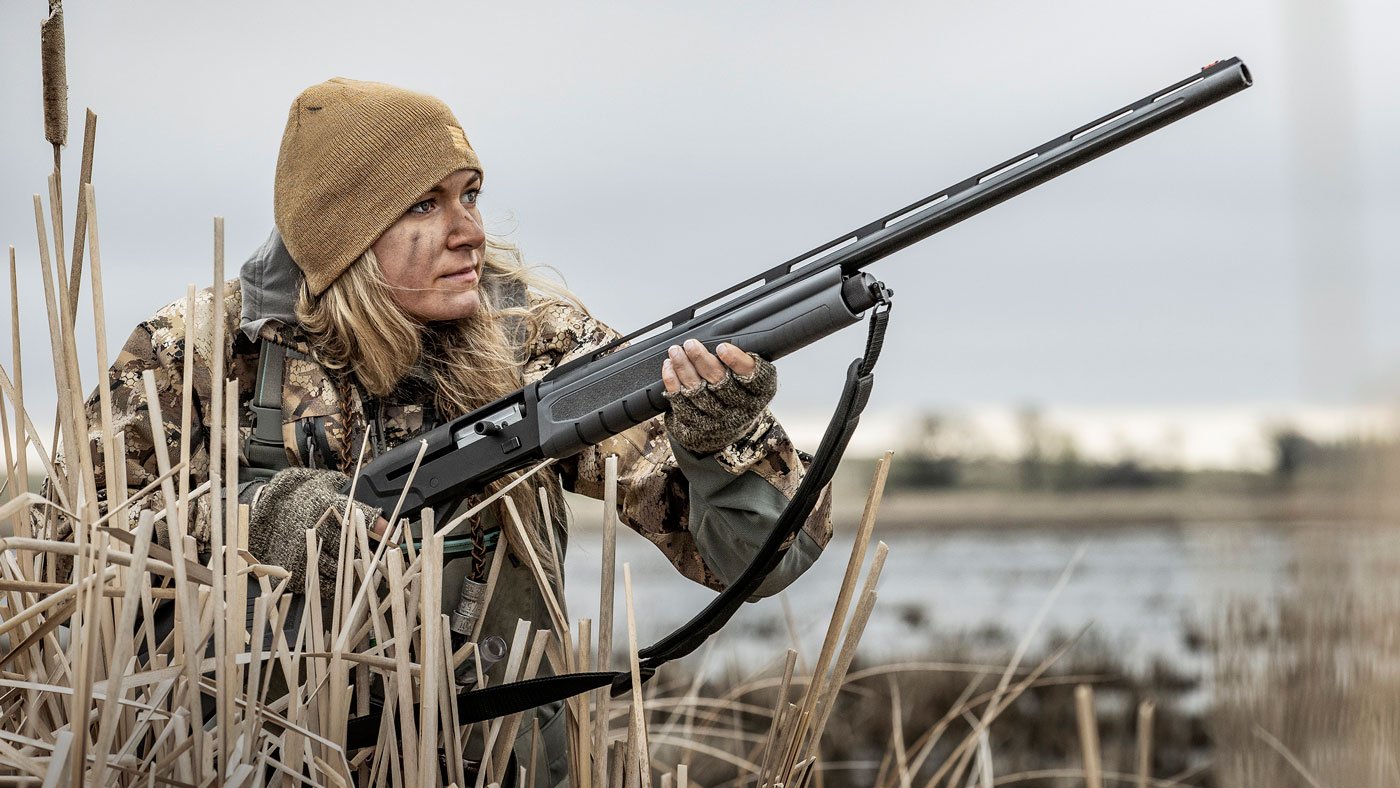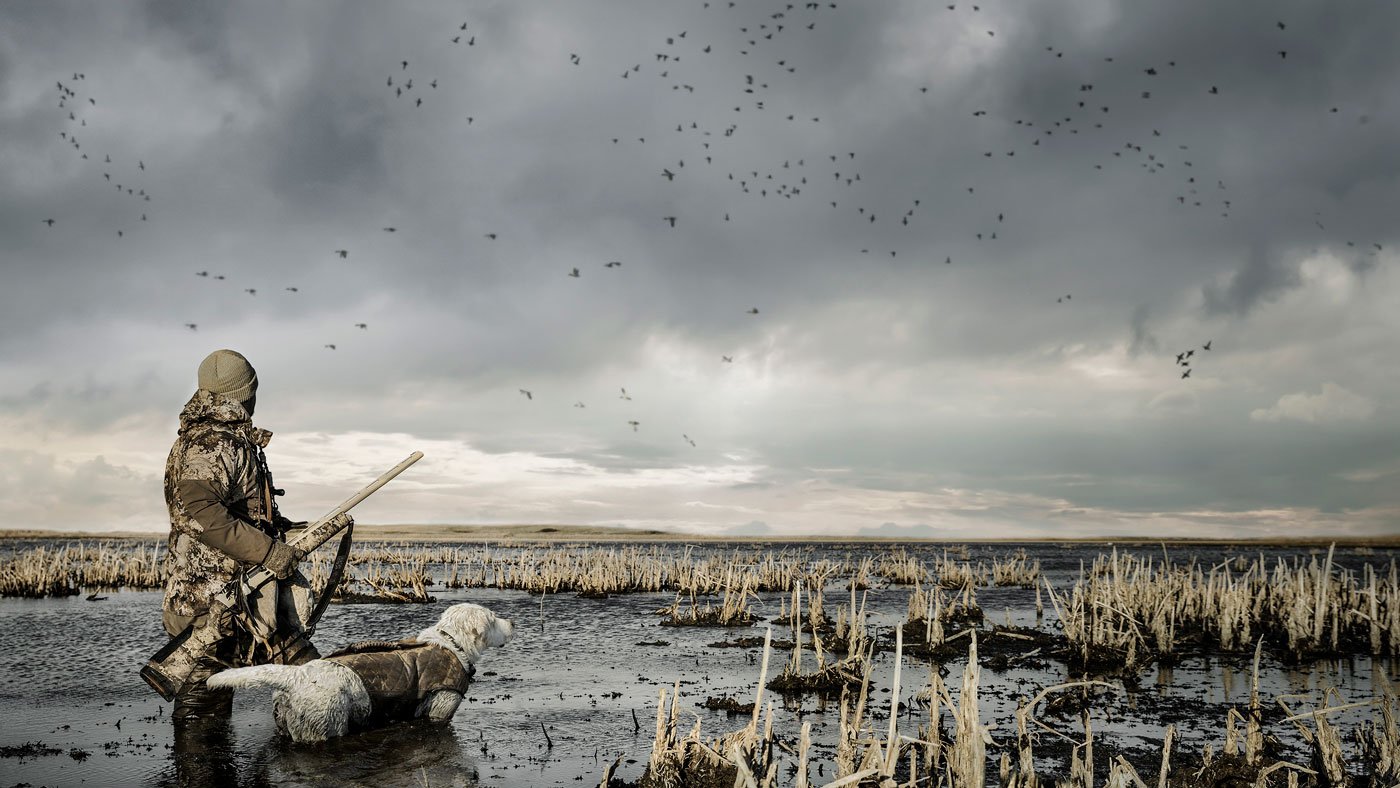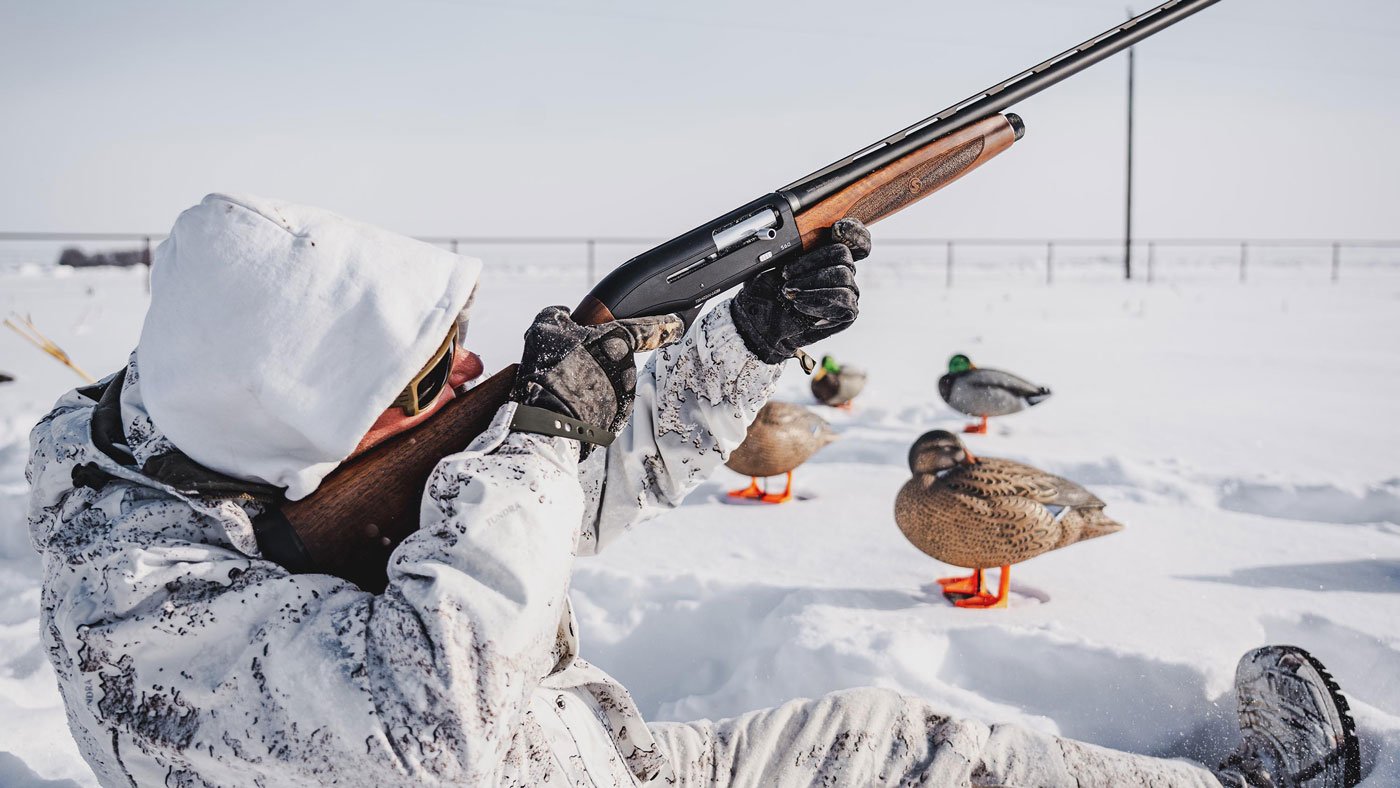- Savage Blog
- Picking Duck Hunting Clothes For Different Environments
Picking Duck Hunting Clothes For Different Environments

Duck hunting is one of the most rewarding and challenging outdoor pursuits, but it also places hunters directly in some of the harshest weather and wettest environments in the field. For newcomers, figuring out what to wear is often tougher than choosing a shotgun or learning how to call. Wearing the right duck hunting clothes can make the difference between an enjoyable hunt and heading home early because of cold, discomfort, or heavy gear that’s not suited to the conditions.
Let's walk through the best clothing choices for various duck hunting conditions throughout the season, from warm early teal hunts to freezing late-season waterfowl. We’ll cover the layers, fabrics, and styles of clothing that help hunters stay hidden, comfortable, and protected in every type of environment. The goal is to help new hunters choose clothing that keeps them warm, dry, and effective while avoiding gear overload or unnecessary expenses.
Early Teal Season Clothing
Early teal season typically arrives when temperatures are still warm, often humid, and full of biting insects. Because of that, new hunters should focus on early season duck hunting clothes that are lightweight, breathable, and protective without adding unnecessary insulation.
Lightweight and Breathable Layers
During teal season, the biggest challenge is staying cool. Choose:
- Lightweight moisture-wicking shirts to keep sweat off the skin.
- Quick-drying pants that won’t weigh you down after wading or if you get caught in morning dew.
- Breathable jackets or shirts that allow airflow while still keeping you concealed.
Clothing for Bug Protection
Mosquitoes, gnats, and no-see-ums are often present during early teal season. Look for clothing options such as:
- Lightweight long sleeves made from breathable fabric.
- Built-in insect repellent fabrics or clothing marketed for early-season bowhunters.
- Light gloves to protect hands without retaining heat.
Footwear for Warm Weather
Instead of heavy insulated boots, early teal hunts often call for:
- Uninsulated or lightly insulated waders
- Breathable hip boots
- Rubber boots with moisture-wicking socks
Staying cool and keeping feet dry helps you move quietly and respond quickly to fast-flying teal. 
Clothing for Hunting in Wetland Areas
Many duck hunts take place in marshes, swamps, flooded timber, or rivers; locations where water exposure is guaranteed and concealment becomes even more important. In these environments, durability and waterproofing in your duck hunting clothes is critically important.
Waterproof and Windproof Outer Layers
Hunters should look for:
- Waterproof jackets with sealed seams to handle waves, rain, and splashes.
- Windproof shells block cold breezes moving across open water.
- Fast-drying underlayers that stay warm even when damp.
These layers keep your core temperature regulated in consistently wet environments.
Waders for Wetland Hunting
Waders are essential when hunting marshes or flooded timber. New hunters should consider:
- Chest waders for deeper waters and improved warmth.
- Breathable waders for early season or mild weather.
- Insulated neoprene waders for colder late-season hunts.
Choose camo patterns that match your surroundings, like reed patterns for marshes and water edges, or hardwood patterns for blending into timber.
Functional Accessories
Wetland environments call for clothing accessories that enhance mobility and comfort:
- Water-resistant gloves that allow you to handle decoys and gear.
- Warm beanies or caps that still fit beneath a hood.
When hunting wetlands, durable clothing that withstands water, mud, and brush helps keep you concealed and moving efficiently throughout the hunt. 
Clothing for Hunting in Cornfields
Cornfield and grain-field hunts require a completely different set of duck hunting clothes than water environments. In field hunts, concealment and insulation take priority over waterproofing. Instead of waders, you’ll often find yourself using bibs and insulated boots. If you’re using blinds, you'll want to blend your blinds in with crop residue, and make sure your camo blends in with these patterns as well.
Field Camo Clothing
Neutral tones and crop-based camo patterns work best for:
- Layout blind hunting
- A-frame blinds set along fence rows or amidst decoy spreads
The ideal clothing includes:
- Tan, khaki, or grass and crop patterned jackets and pants
- Layered tops that aren’t bulky and allow mobility when sitting up for a shot
- Light to midweight base layers depending on weather
Unlike marsh hunts, field hunts don’t require submersion in water, so good insulation and camouflage matching the terrain becomes more important than waterproofing.
Keeping Warm and Comfortable
Field hunts can range from mild autumn weather to freezing late-season conditions. Good gear choices include:
- Insulated jackets for colder weather
- Beanies or balaclavas to protect from wind
- Water-resistant boots for dew and mud
Field hunts give hunters more freedom to dress comfortably since they’re not submerged in water. Use the opportunity to layer well and focus on concealment. 
Late Season Duck Hunting Clothing
Late-season waterfowl hunting is often brutally cold, wet, and windy. Ducks are more wary and fully plumed, and hunters must sit still longer in freezing temperatures. This is where the warmest duck hunting clothes become essential.
Heavy Insulation and Layering
Late-season comfort depends on a smart layering system:
- Base Layer: Moisture-wicking thermal shirt and leggings
- Mid Layer: Fleece or wool insulation to trap heat
- Outer Layer: A heavy waterproof and windproof parka to fight the cold
This combination keeps hunters warm, dry, and able to sit motionless even in subzero temperatures.
Cold Weather Waders and Boots
In freezing weather and wet environments, your waders need additional insulation:
- 5mm neoprene waders
- Insulated waders paired with fleece-lined pants
- Thick merino wool socks inside insulated boots to help trap heat and keep your feet warm.
Cold water and frozen mud quickly drain heat, so insulated footwear protects against frostbite and maintains comfort.
Face and Hand Protection
Cold-weather hunting requires specialized accessories to help keep you warm:
- Windproof facemasks or balaclavas
- Insulated shooting gloves that still allow for safe shotgun handling and easily pulling the trigger
- Hand muff warmers to preserve dexterity between flocks and shooting windows
Late-season hunts often reward the most prepared hunters who stay warm the longest, and often enjoy the best flights of the season. 
Choosing the right duck hunting clothes is one of the most important steps new hunters can take to ensure comfort, safety, and success in the field. Each part of the season, from early teal warmth to late season chill, brings different challenges. Warm-weather hunts call for breathable, lightweight fabrics, wetland hunts require waterproof and durable gear, field hunts rely on concealment and flexibility, and late-season hunts demand heavy insulation and protection from the elements.
By understanding how clothing needs change with the weather, environment, and hunting style, new waterfowlers can build a versatile wardrobe that keeps them prepared for any conditions the season throws their way.

